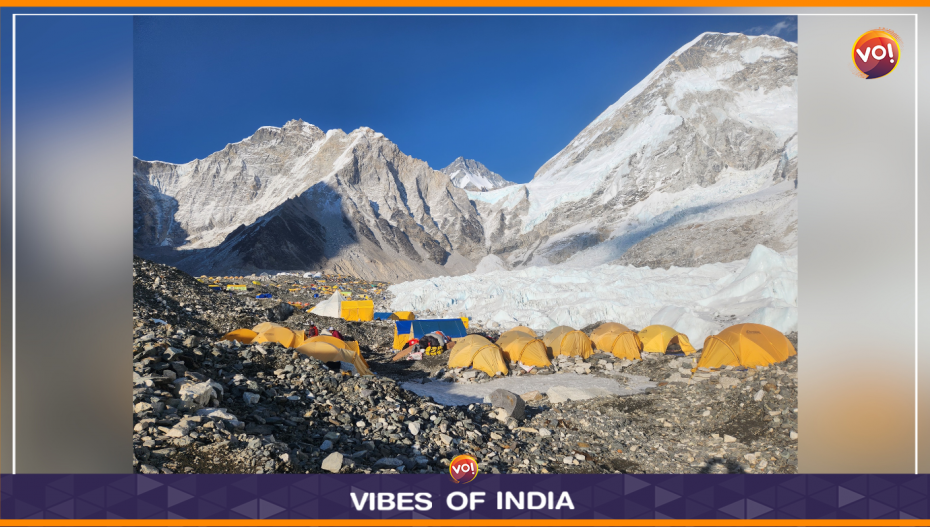It’s a common thought among able-bodied people or even persons with any kind of disability or a medical condition that it’s impossible for them to do anything outdoors or pursue activities such as hiking or trekking in high altitudes.
But, “If You are determined no matter what, you will accomplish your goal”. Determination is one such thing that has a great impact on one’s life. No matter what you aim for, no matter what you are capable of, if you are determined enough to get what you want, there is nothing that can stop you. Sudhir Krishnan aka Krish Nair, a resident of Kent, UK is an example of how his determination helped him achieve his goal to summit Everest base camp (5360 mts) this April. Despite suffering from Parkinson’s for the last 15 years, Sudhir, did not let Parkinson’s come in the way of achieving his goal.
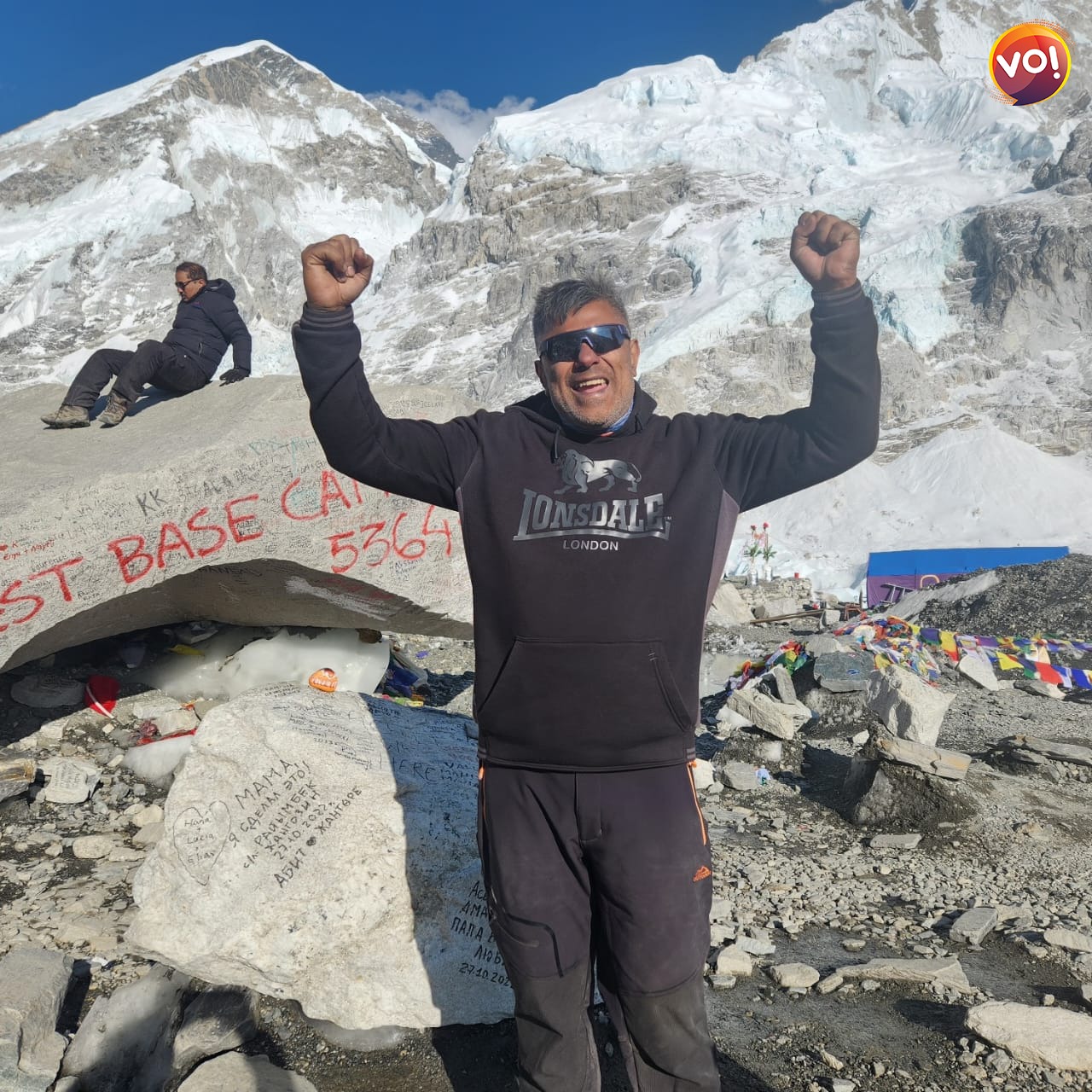
#Trekking4Parkinsons was his mission that Sudhir undertook all the way to #EverestBaseCamp to raise awareness about Parkinson’s disease and also raise funds for the Integrated Parkinson’s Centre in Canterbury, Kent in UK. The centre will offer, under one roof, evidence-based therapies such as neuro-physiotherapy, mental health support, group exercises, speech and language therapy, group singing and nutritional advice alongside ground-breaking research into the effects of non-invasive brain stimulations. Here is a link to his crowdfunding page. Any interested can go through the link and donate directly for the cause https://www.justgiving.com/fundraising/krish-trek-everest-base-camp
Most who are diagnosed with Parkinson’s feel that it’s the end of the road and there is no turning around for the better. Parkinson’s disease is a progressive nervous system disorder that affects movement and balance. And while there are treatments to help with the symptoms, there is no cure. Sudhir was diagnosed with Young Onset Parkinson’s (YOPD) when he was 37 years old.
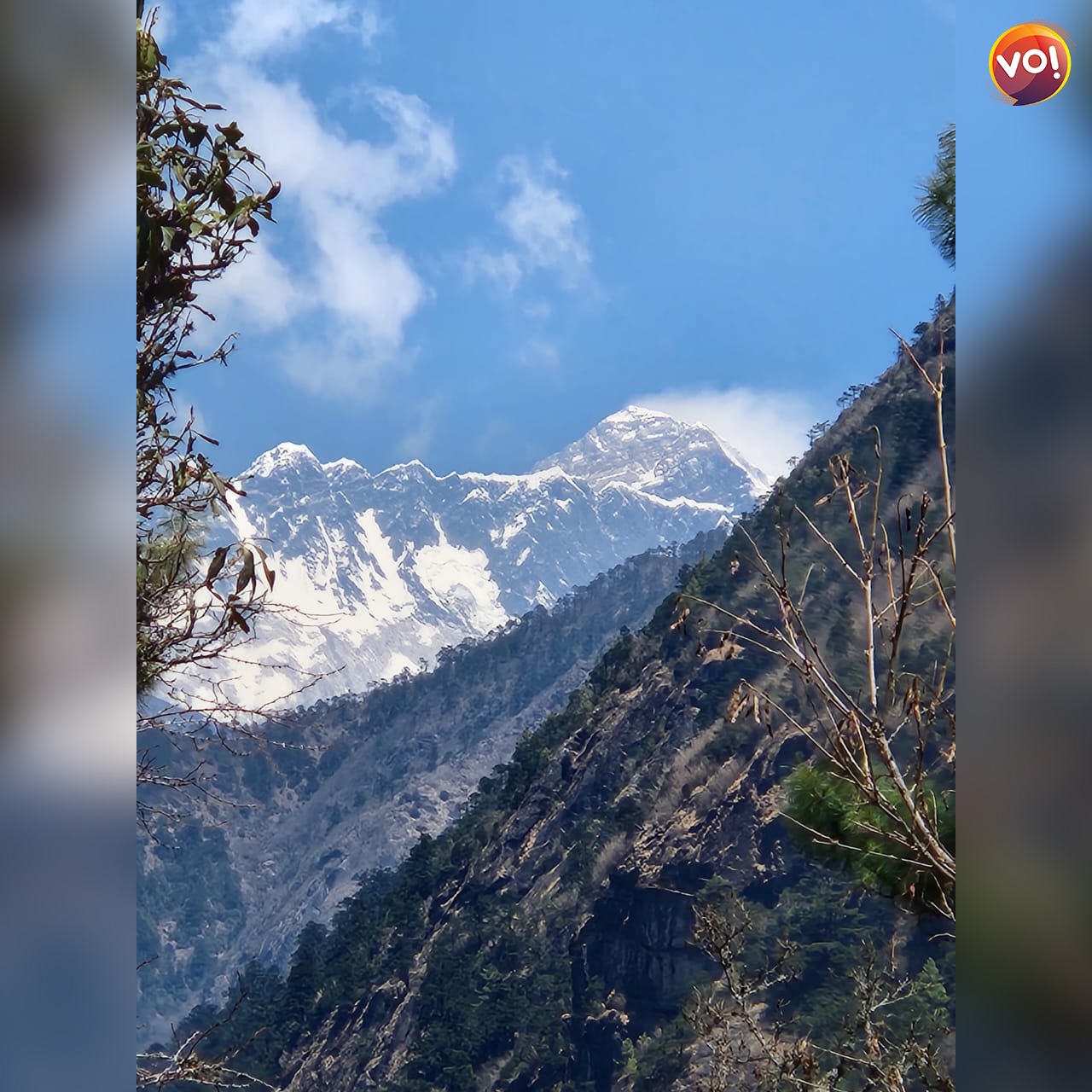
Sudhir, realised very early in his diagnosis that exercise helps. He plays golf and walks 6 miles at least 3 days a week. Playing Golf had given him the strength and courage to decide that probably trekking can help people with Parkinson’s. He initially started with small treks in the Himalayas on his visit to India in 2021 and then in August 2022 when he scaled 15,300 feet to Hemkund Sahib. Hemkund Sahib trek led him to ponder over his achievement and he got the confidence to embark on a bigger journey to spread awareness about Parkinson’s by trekking to #everestbasecamp in Nepal.
As I understand from my reading about Parkinson’s, walking every day can drastically improve their ability to live an independent and fulfilling life. Research has found that just 20 to 30 minutes of brisk walking daily can help Parkinson’s symptoms, such as gait, balance, tremors and flexibility.
Trekking can be a great way to help those living with the neurodegenerative disorder. My observation is that by participating in a trek, individuals with Parkinson’s can benefit from physical activity, social interaction, and mental stimulation.
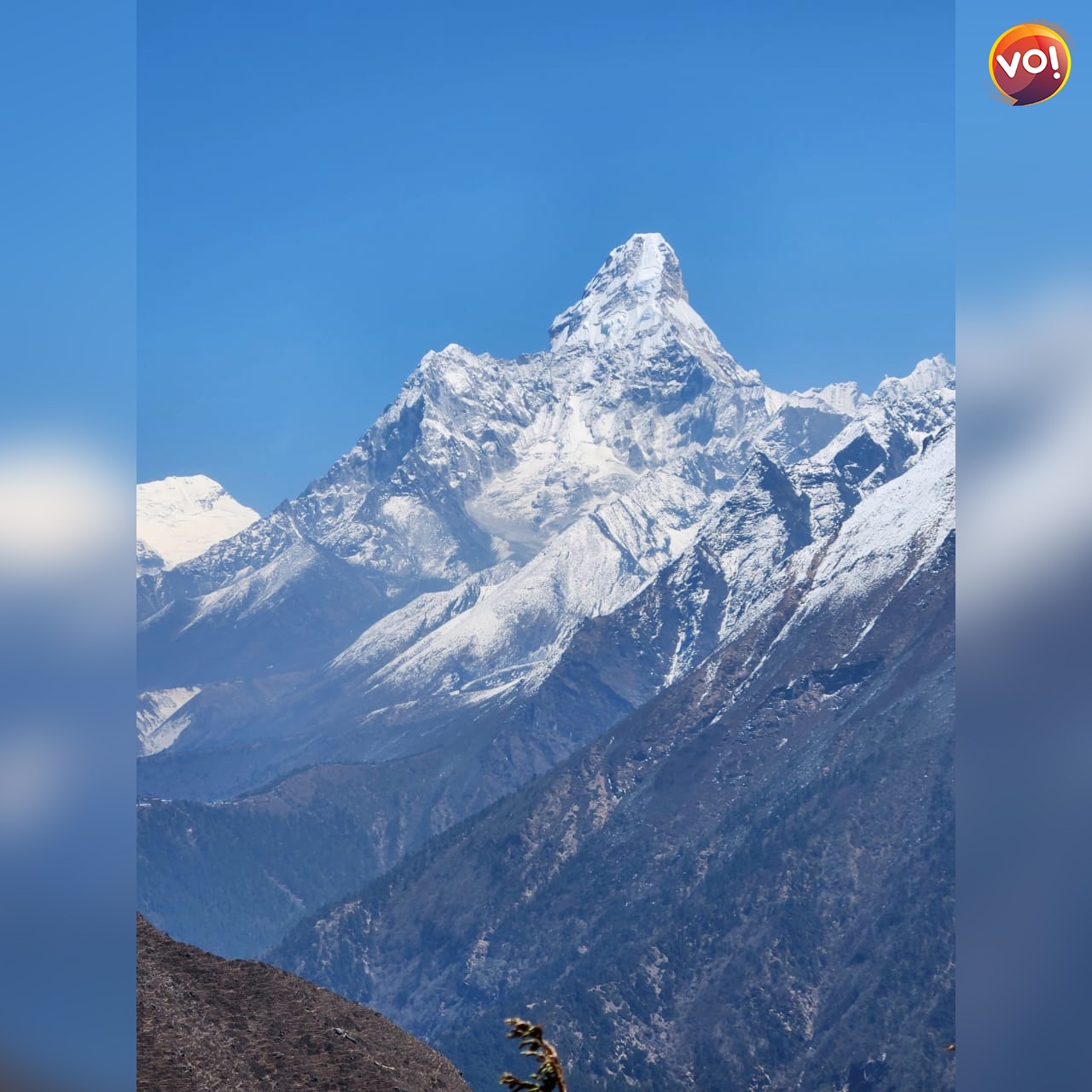
The physical benefits of trekking are numerous. It can help to increase muscle strength and flexibility, improve balance and coordination, and reduce stiffness in the limbs. Furthermore, it can help to improve posture and reduce the risk of falls. Trekking also helps to increase aerobic activity, which can lead to improved cardiovascular health and better overall health outcomes.
While I was confident Sudhir will accomplish his goal to get to Everest base camp, I was also mindful of the fact that it was not going to be easy on him. The terrain at some points will be harsh to navigate, especially the moraines after Dingboche towards Lobuche, crossing the Thukla Pass and then towards Everest base camp.

When a person with Parkinson’s is outdoor trekking or hiking, they experience subtle changes in the terrain that test their balance and cognition, such as walking on uneven surfaces and navigating turns. This is precisely what Krish encountered throughout his journey to the Everest base camp. Here is where I observed his mental strength of being outdoors and his determination to make it to the top. He seemed more confident this time having done the Hemkund Sahib trek earlier in the Himalayas.
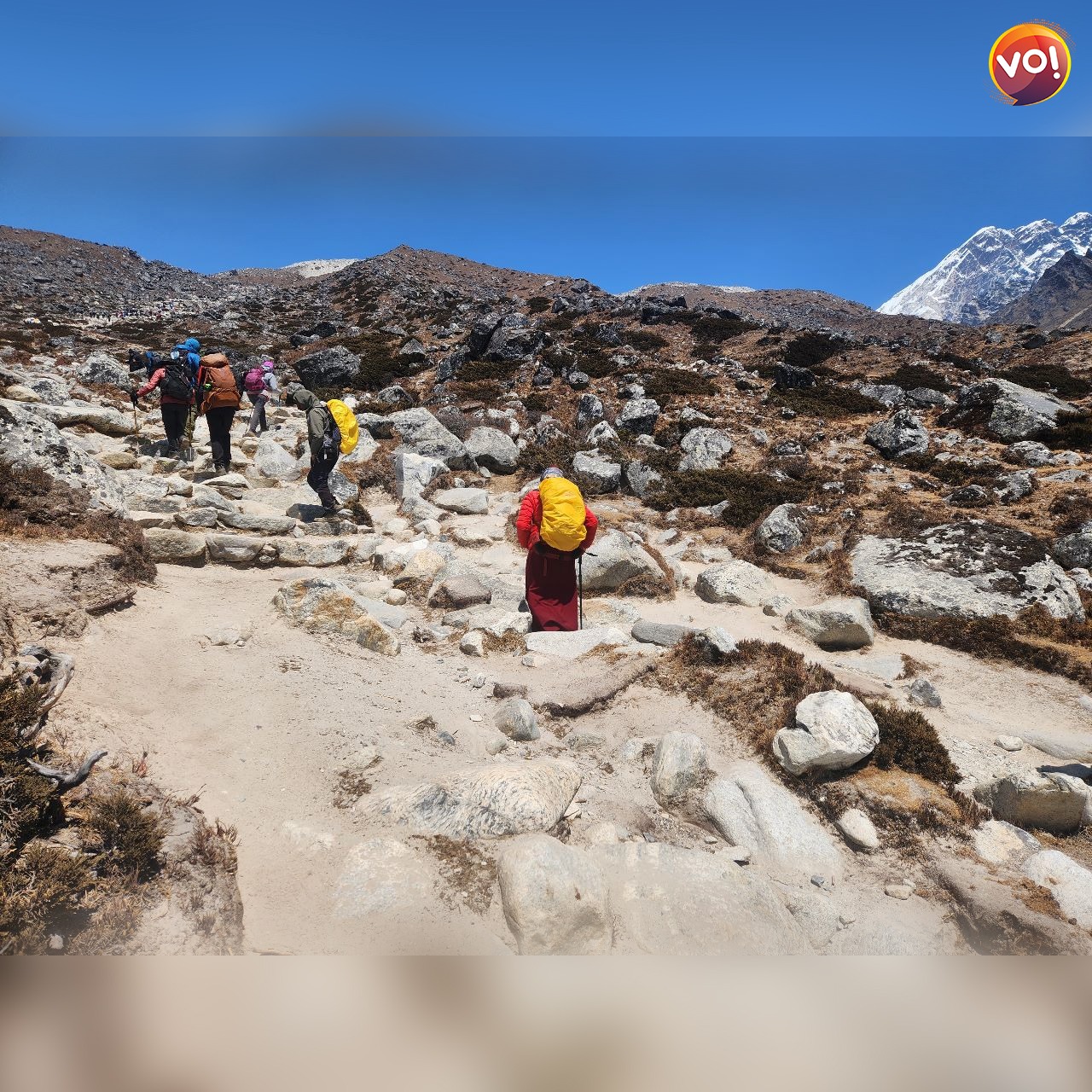
Here is what Sudhir, has to say about his experience, “It was a hard, arduous, long and difficult journey. My focus was to get from A to B for 8 days to get to the top of Everest base camp (5364 meters). This walk usually lasts 7-8 hours every day. Throughout the trek, I was thinking of enjoying the moments in those amazing landscapes gifted by Mother Nature. I was surrounded by giants, the great Himalayan peaks”.
“I was on a high, definitely dopamine was produced as I didn’t have a hint of apathy. I was beaming with this unconscious urge to walk and see more of nature’s magic. Every stone, every difficult turn, every moraine, every body of mineral water, the Khumbu glacier, Mt. Everest, Amadablam, and Lhotse were my incentive to carry on walking and explore more,” says Sudhir.
Finally, he adds, “But unlike non-parky I had to stop many a time to catch my breath. This meant I had to leave at least 2 hours before the rest of the group, most were trained and experienced mountaineers. I learned quite a lot in their company. I hope I can challenge myself more in future. Sky’s the limit. I would like to thank my Nepalese guide, Mohan. “Mohan was very kind and picked up my issues very quickly. He was ready for help at the drop of a hat,” says Sudhir.
From my observation as a guide, the grit and determination that Sudhir showed on this arduous trail were extremely encouraging and motivating for me and my Nepalese co-guide. In my last few years of leading treks for persons with disabilities, I have come to realise that people with disabilities or any medical condition are far more resilient, determined and positive in their approach towards achieving their goals. This is because persons with disabilities or any medical condition have a unique set of challenges that they must face and overcome on a daily basis. This creates a strong sense of resilience in them that helps them to persevere and never give up, no matter how difficult things may seem. Their determination to succeed also comes from the fact that they have a strong belief in themselves and their abilities, even when faced with obstacles that may seem insurmountable. They are often determined to prove to the world that they can be just as capable and successful as those without disabilities. All of these factors combine to create an immense determination and resilience that is unique to those with disabilities and helps them to succeed in spite of the challenges they face.

Benefits of Trekking for People with Parkinson’s
Outdoors is a great leveller and no matter what your shortcomings as a person with Parkinson’s or as an able-bodied person, the stress and exhaustion that one goes through on this trek is the same for all.
Trekking is a powerful cardio exercise that can lower your risk of heart disease and improve your blood pressure and blood sugar levels while filling your lungs with fresh, clean air. Trekking also improves bone density and strengthens your core, glutes, quadriceps and hamstrings. It’s one of those “one-stop-shop” workouts that build multiple components of fitness (cardio and strengthening) simultaneously.
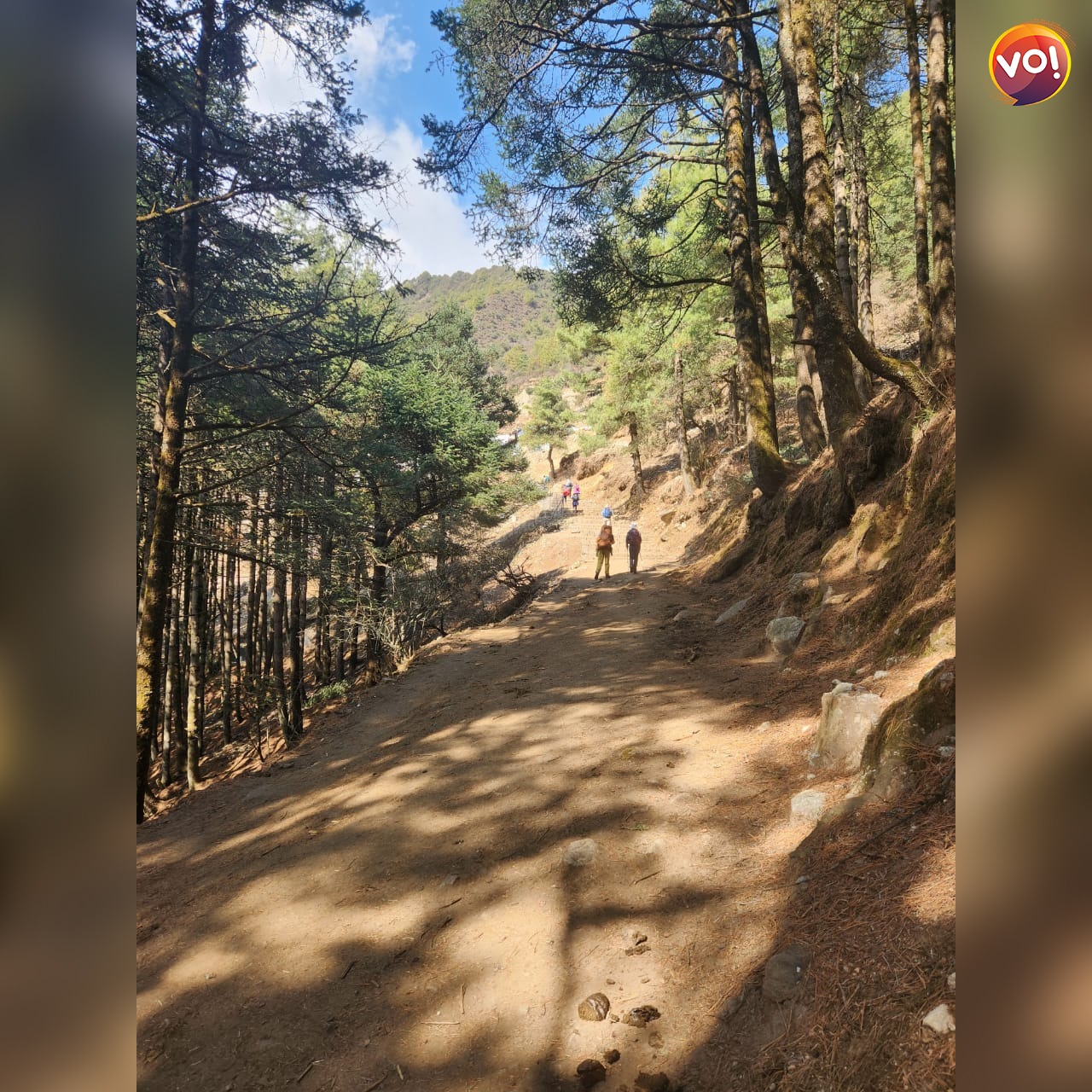
Adding to these benefits is an overall outdoor environment wherein you are taking in the mesmerizing sounds of the birds and leaves and witness some of the most scenic views Mother Earth has to offer—be it forests, mountains, or rivers—trekking nourishes the mind, body and soul in ways no other workouts can. Trekking can help to boost mood, reduce stress and enhance the quality of life.
Especially in the case of Parkinsons where apathy and depression are part and parcel of the effects, being outdoors keeps the individual’s mood uplifted and happy. Dopamine is the hormone that gives one a pleasurable feeling after doing something successfully, in this case successfully being able to reach the summit ( EBC). This feeling of pleasure and happiness was clearly seen in Sudhir on his reaching the summit.
All through the Everest Base Camp trek, you are followed by the massive mountains. You get the view of the mighty Mt Everest, Lohtse, Lobuche, Nuptse and the beautiful and mesmerizing Amadablam peaks.
To engage the upper body further, trekking with trekking poles helped Sudhir a lot, especially in uphill climbs. Trekking poles keep you from falling when going uphill or downhill, or crossing streams, and they also help take some of the load off the joints.
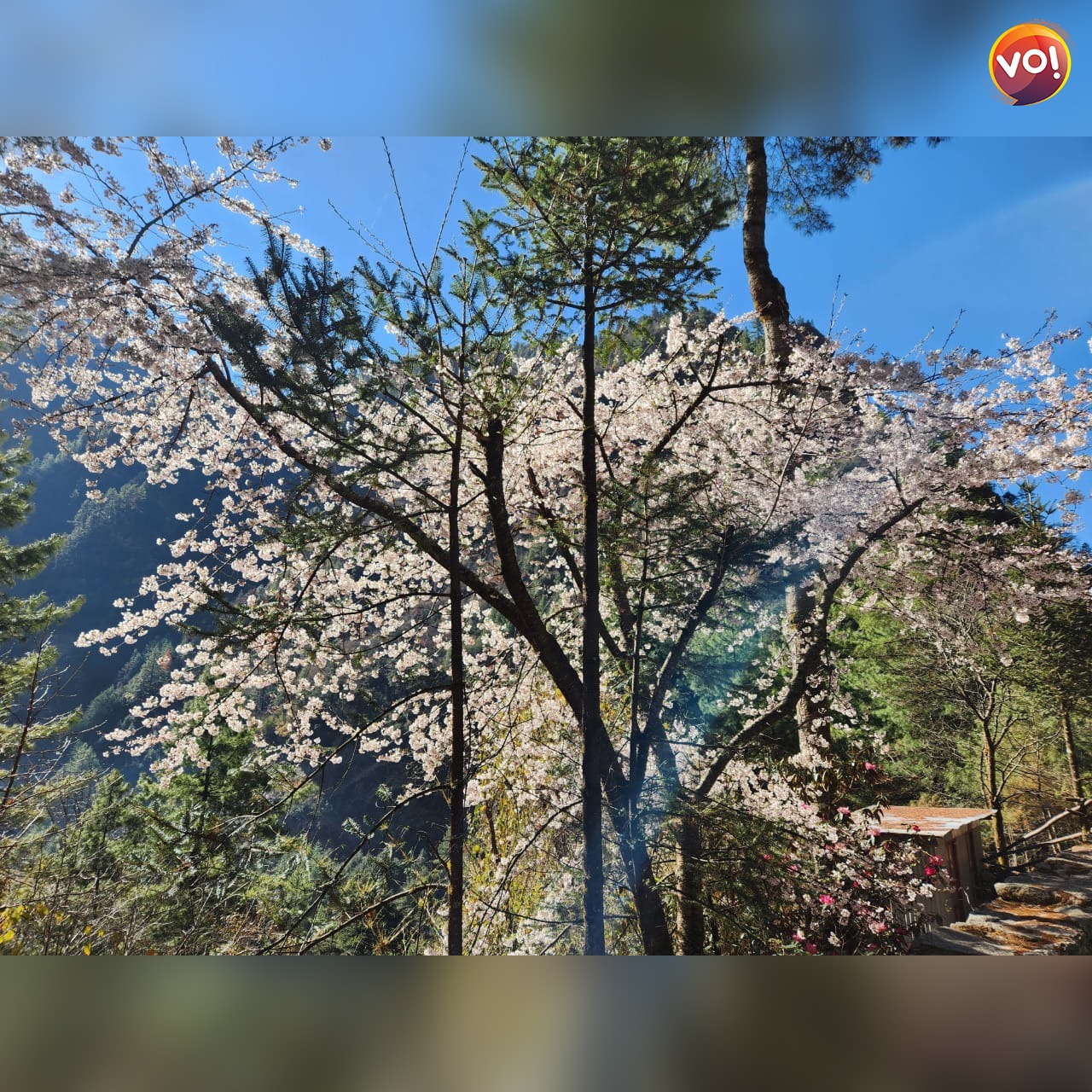
I noticed that trekking with poles for a person with Parkinson’s is helpful as it reinforces balance issues. Using two poles helps strengthen the upper body muscles, thus improving a stooped posture.
For a person with Parkinson’s, medication is very important. Jokingly, Sudhir would say that every 4 hours he has to charge himself which means that every four hours he has to have his medication. He carried his medication along with him and we would stop when he had to take his medication. He also had a quick-release fix which he would take at times when he realized he was going stiff.
As a mountain guide for me safety comes first. My focus was largely on ensuring that none of us get high altitude sickness or AMS. We were not on Diamox and were acclimatising naturally by having loads of water all through the day. I also did have my first aid kit on me mainly in case of an injury.
Water is an essential part of trekking, the more water you drink in the high altitude, the better acclimated you get. You need the extra H2O to tackle common PD symptoms like dehydration and hyperhidrosis (excessive sweating. ) Sudhir did not once have any high altitude sickness.
Sudhir, along the way, has inspired and motivated so many people ( all able-bodied) to not wear away from their goal to get to #EBC no matter how difficult they find it.
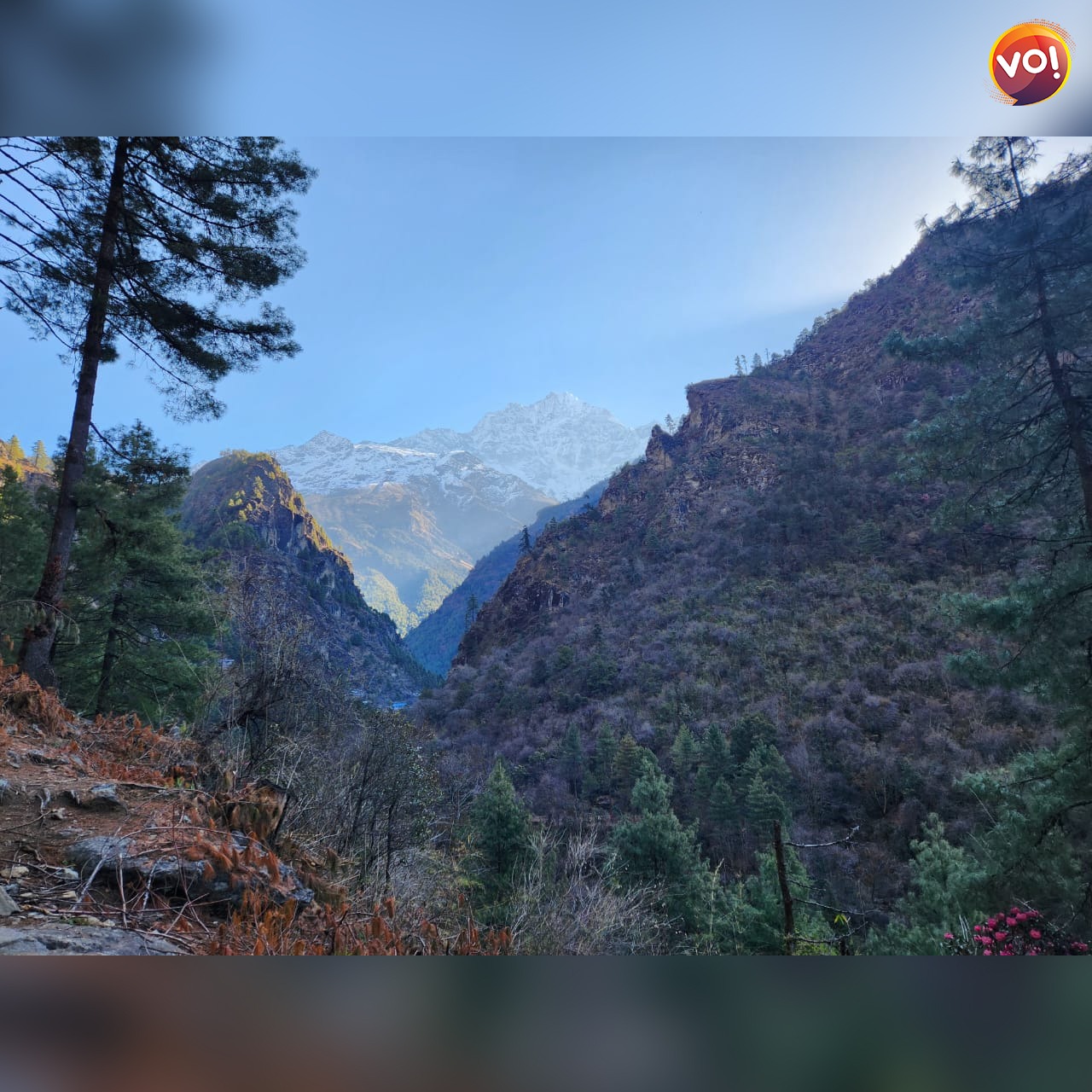
Ever since I have been leading treks with persons with disability or any medication condition, and this time around trekking with a person with Parkinson’s made me realize that it is indeed an excellent way to create more awareness about Parkinson’s. Most we met along the trail had no clue what Parkinson’s was all about. In Fact, many came up to me asking me if Sudhir was ok and if he was alright watching his hands tremor and legs sometimes going stiff while walking.
Having a health condition doesn’t stop anyone from enjoying the outdoors. I have been a chronic asthmatic and that has never been an obstacle for me in the mountains. I along with the others who have some issue or the other have experienced this reality and want to share how we coped with pre-existing health conditions. Today, we at Bohemian Adventures have been on a mission to be able to take everyone to the mountains despite their shortcomings.
By organizing an inclusive trekking experience, our aim at Bohemian Adventures is that people with Parkinson’s or any other disability or medical condition, along with able-bodied people, can come together to share knowledge, stories, and experiences. By having these conversations and experiencing the outdoors together, each person can gain a better understanding of the challenges that come with any kind of disability or living with Parkinson’s and the unique perspectives of those who are living with the condition.
The group of mountaineers who were with us certainly, I can say that they did have a changed perspective towards an inclusive trek. Mountaineering and trekking have always been individual thing for most. Making it inclusive has now become more essential so that everyone can equally enjoy the vast bounties of nature.
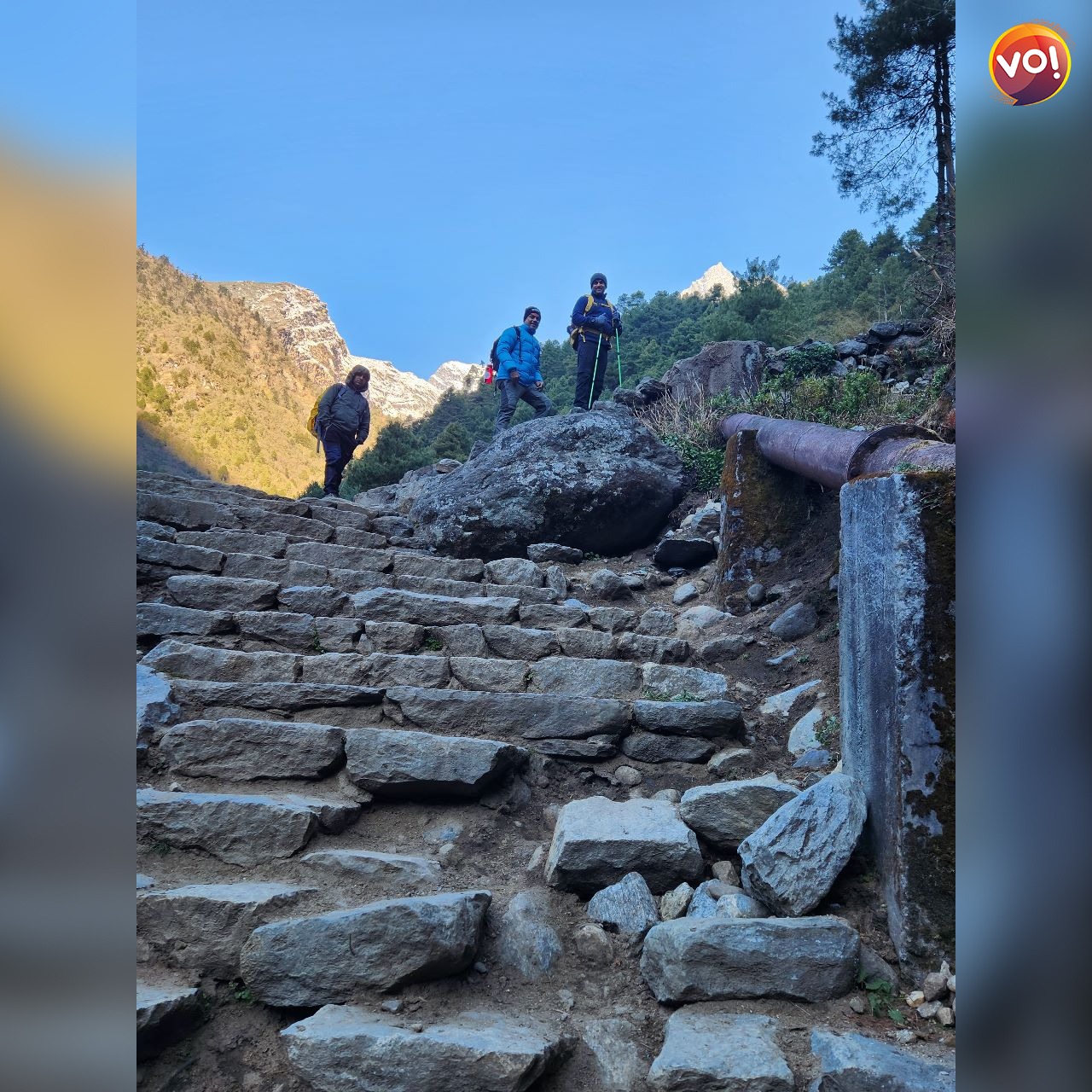
Over the years, we at Bohemian Adventures, have come to realize that an inclusive trekking experience can be a great way to break down barriers and create a more inclusive and understanding environment. The trek is great to engage in conversation with people who are living with medical conditions or any disability and hear their stories. In addition to the physical and mental benefits, trekking with Parkinson’s can create more awareness around this condition.
Sudhir, through sharing his stories and experiences of trekking, helped to spread a positive message about living with Parkinson’s and to encourage others who are affected by the condition. I am sure many who have met him along the trail will certainly go back and share his story of courage and determination. That is how stories spread and conversations start.
Trekking4Parkinson’s to Everest Base Camp is also certainly a great way to inspire. In a way, it’s a reminder that anyone can do anything if they put their minds and their hearts into it. The trek can also be a great way for people with Parkinson’s to see that their condition does not have to limit them or their dreams.
Overall, trekking with Parkinson’s can be an incredibly rewarding and inspiring experience. By setting an example Sudhir, has shown that it is possible to conquer the terrain, and others can be inspired to do the same.

and a Mountaineer
Also Read:NCLT To Hear Two Insolvency Petitions Against Go First


